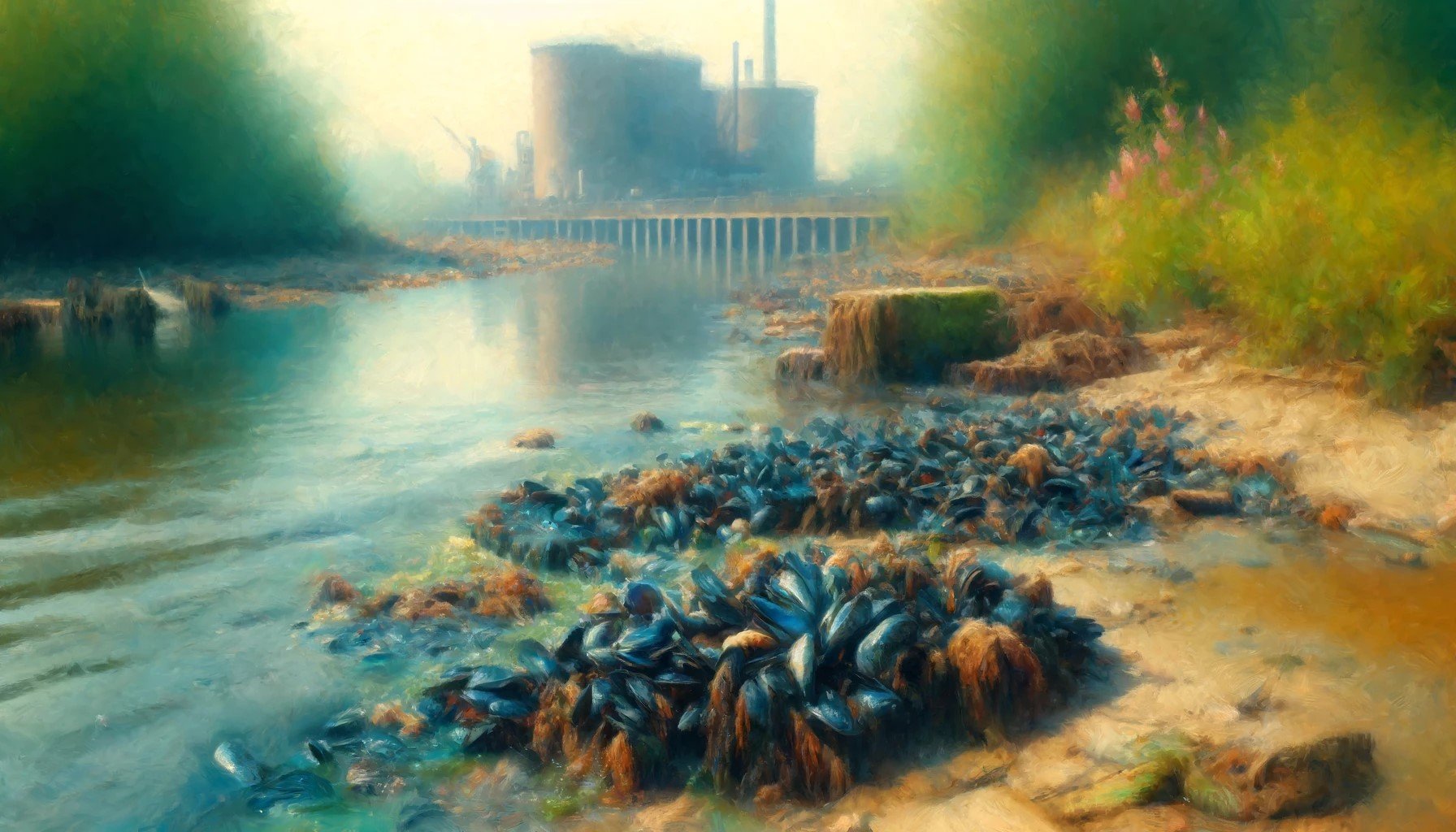The river spits
its secrets in the silt,
dark veins tracing
memories of buried spills –
dusky riffles spiked
with fetid tears.
Mussels cling
to the sediment,
their shells
etched with scars
of our making –
they sip
the heavy water,
tongues tasting
metallic pasts
laced with bilge.
Downstream
the current carries on,
soft fingers radiant
with unseen light –
seeping through
the fragile skins
of everything
in reach.
This poem is inspired by recent research, which has found that mussels downstream of wastewater treatment plants contain radium.
Historically, the management of wastewater produced from oil and gas extraction has been a significant environmental challenge. This waste, often disposed into rivers, can contaminate the surrounding ecosystem with hazardous substances such as radium, a naturally occurring radioactive material. Radium can persist in riverbed sediments, posing a long-term threat to aquatic life. Of particular concern are benthic organisms like freshwater mussels, which live on the bottom of water bodies and are particularly susceptible to accumulating radium in their bodies over time. This accumulation raises serious health concerns, not only for the mussels themselves but potentially for the broader ecosystem and human populations that may rely on these water sources.
In response to this issue, researchers have investigated the extent of radium contamination in the Allegheny River in Pennsylvania, near a waste treatment facility that has historically processed and discharged oil and gas wastewater. Their study focused on adult freshwater mussels of the species Eurynia dilatata, analysing radium levels in the mussels’ soft tissues and shells, as well as in the sediment of the riverbed. The findings were alarming: radium levels were significantly higher near the discharge site compared to upstream areas. Furthermore, evidence suggested that the mussels retained radium in their tissues up to several kilometres downstream from the discharge point. This study not only highlights the capacity of radium to bioaccumulate in aquatic organisms but also underscores the ongoing impact of legacy waste disposal practices on river ecosystems. The implications stress the need for stricter controls and cleanup measures to protect aquatic life and, by extension, the health of the environment and the public.
Discover more from The Poetry of Science
Subscribe to get the latest posts sent to your email.
